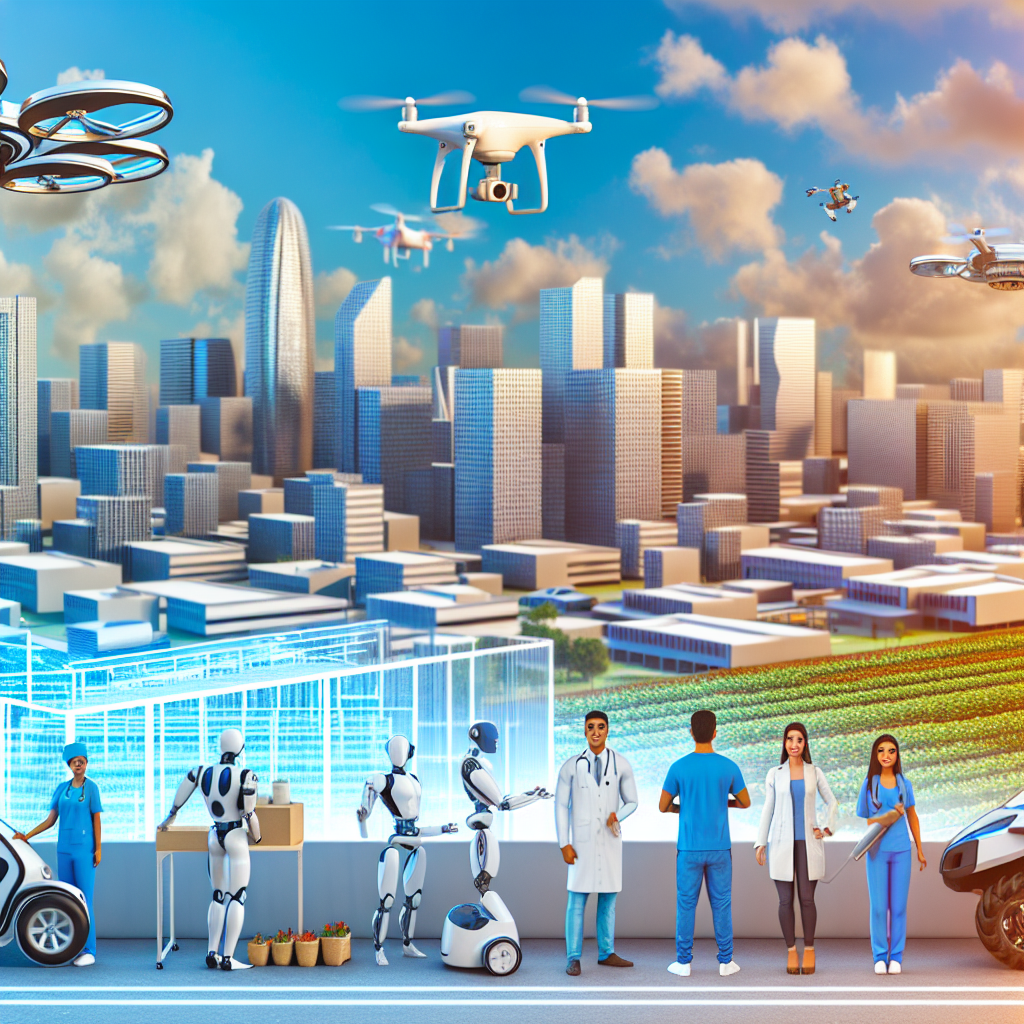AI Technology Advancements and Applications
Introduction to AI Technology
Artificial Intelligence (AI) continues to redefine the limits of technological innovation, standing as a groundbreaking field driving modern advancements. At its core, AI is a blend of technologies like Machine Learning (ML), Natural Language Processing (NLP), and robotics, which empower machines to mimic human intelligence. Since its inception, AI has journeyed from theoretical underpinnings in the mid-20th century to tangible milestones, such as the development of deep learning algorithms and sophisticated neural networks in recent years.
AI’s rise is marked by pivotal moments including the creation of Deep Blue, the first computer to defeat a reigning world chess champion, and Google’s AlphaGo, which triumphed over a human champion in the complex game of Go. Today, AI is integral to sectors ranging from finance to healthcare, signifying its indispensable role in the modern tech landscape.
Recent Advancements in AI Technology
The recent years have witnessed exponential growth in AI capabilities, largely due to technological innovations and enhancements in computational power. Notably, the launch of advanced GPT models has revolutionized how machines understand and generate human-like text, offering applications in automated content creation and customer interaction.
Moreover, computer vision advancements have enabled machines to interpret visual data with astounding precision, supporting industries such as security and automotive with technologies like facial recognition and autonomous driving. All these advancements are fueled by increased data availability and faster processors, with numerous organizations like Google, OpenAI, and IBM pushing the envelope in AI R&D.
Applications of AI Across Various Industries
AI’s versatility finds applications across numerous sectors:
-
Healthcare: AI aids in diagnostics by rapidly analyzing medical images, providing personalized treatment plans, and improving patient care with human-like interaction in nursing robots and virtual health assistants.
-
Finance: Fraud detection algorithms utilize AI’s predictive prowess to flag anomalous transactions, while algorithmic trading capitalizes on AI’s speed and accuracy to make swift trading decisions. Customer service also benefits through chatbots offering instant support.
-
Transportation: Autonomous vehicles are one of AI’s most publicized applications, leveraging machine learning and sensor data to navigate and make decisions in real-time traffic conditions, streamlining transportation and traffic management.
-
Manufacturing: AI-driven predictive maintenance predictions prevent machinery breakdowns, and robotics automate production processes, enhancing efficiency and reducing labor costs.
-
Retail: AI facilitates personalized shopping experiences with recommendation systems that analyze shopping patterns, while inventory management systems automatically restock or highlight out-of-stock items.
Case Studies of Successful AI Implementations
Companies across industries exemplify AI’s transformative power:
-
Google’s DeepMind: Their AI algorithms have not only mastered complex games but also optimized Google’s data centers, resulting in significant energy savings.
-
IBM Watson in Healthcare: Watson’s AI capabilities help in personalized cancer treatment by analyzing patient data to recommend tailored treatment options.
-
Tesla’s Full Self-Driving Beta: Tesla leads the charge in autonomous vehicle technology, using AI to constantly improve its autopilot and full self-driving capabilities through continuous real-world data collection.
These successes underscore critical lessons: understanding data is paramount, tailoring AI to specific challenges maximizes effectiveness, and continuous iteration ensures models remain relevant and efficient.
Future Trends in AI Technology
Looking ahead, AI is poised for continued evolution with emergent technologies. Explainable AI seeks to clarify AI decision-making processes, fostering trust in autonomous systems, while federated learning addresses data privacy by training algorithms across decentralized devices.
In the forthcoming decade, AI is expected to solidify its place in global technology investments, predicted to reach $6.7 trillion by 2025. Key growth areas include semiconductors, renewable energy, and AI-driven automation, presenting promising opportunities for investors and technologists alike.
Challenges in AI Development and Deployment
Despite its perks, AI faces several challenges:
-
Ethical Concerns: Bias within algorithms can lead to unfair outcomes, necessitating rigorous checks and balanced data sets. Privacy issues also arise, particularly with the vast amounts of data collated by AI systems.
-
Technical Hurdles: Ensuring interoperability among diverse systems and scaling up AI deployments in sectors like smarts cities and IoT presents significant challenges. High-quality data remains essential, yet often elusive.
-
Workforce Implications: As AI automates tasks, there is a looming threat of job displacement. This calls for proactive reskilling and upskilling initiatives to prepare the workforce for the evolving tech landscape.
Conclusion
AI heralds a transformative potential that continues to reshape industries and everyday life. Its ongoing development requires collective engagement from technologists, policymakers, and society to direct these advancements responsibly and ethically. Stakeholders are encouraged to integrate these technologies into their operations while fostering an environment of continuous innovation and adaptation.
Code Implementation Section
For those intrigued by practical AI applications, here’s a look at implementing a modern transformer-based NLP model using Hugging Face Transformers for text summarization.
import torch
from transformers import pipeline, BartForConditionalGeneration, BartTokenizer
# Initialize the summarization pipeline with BART model
summarizer = pipeline("summarization", model="facebook/bart-large-cnn")
# Sample text to summarize
article = """
In recent years, artificial intelligence and machine learning have revolutionized numerous industries,
from healthcare to finance. The rapid advancement of natural language processing models has enabled machines
to understand and generate human-like text with unprecedented accuracy. These developments have led to
applications such as automated customer service, content generation, and sophisticated translation systems.
However, experts caution about ethical implications including bias in AI systems, data privacy concerns,
and the potential displacement of certain jobs. Researchers are actively working on creating more
transparent and explainable AI systems that can be trusted and understood by end users.
"""
# Generate summary with the model
summary = summarizer(article, max_length=100, min_length=30, do_sample=False)
# Print the generated summary
print("Original text length:", len(article.split()))
print("Summary:", summary[0]['summary_text'])
print("Summary length:", len(summary[0]['summary_text'].split()))
# For more control, you can also use the model directly
model_name = "facebook/bart-large-cnn"
model = BartForConditionalGeneration.from_pretrained(model_name)
tokenizer = BartTokenizer.from_pretrained(model_name)
# Tokenize and generate summary
inputs = tokenizer([article], max_length=1024, return_tensors="pt", truncation=True)
summary_ids = model.generate(inputs.input_ids, num_beams=4, min_length=30, max_length=100, early_stopping=True)
custom_summary = tokenizer.decode(summary_ids[0], skip_special_tokens=True)
print("\nCustom summary:", custom_summary)
This example highlights how to leverage pre-trained transformer models for tasks such as text summarization, demonstrating AI’s applicability in content management systems.





